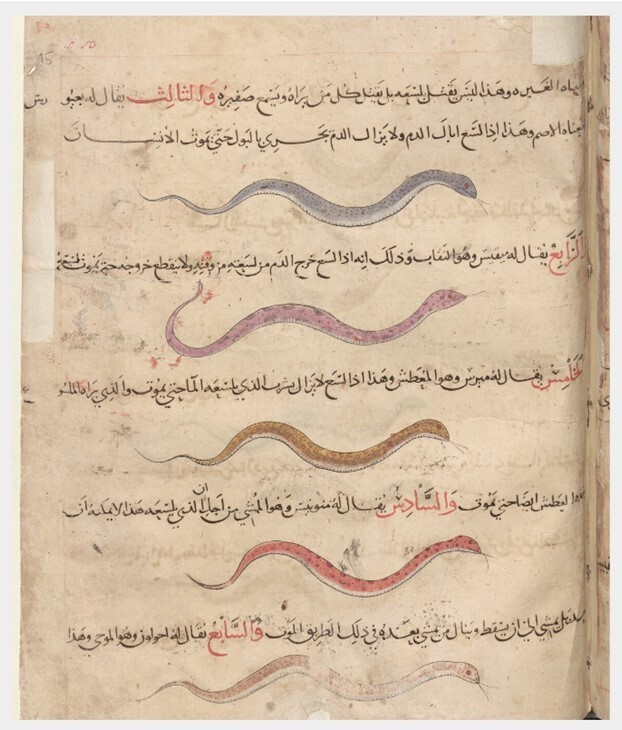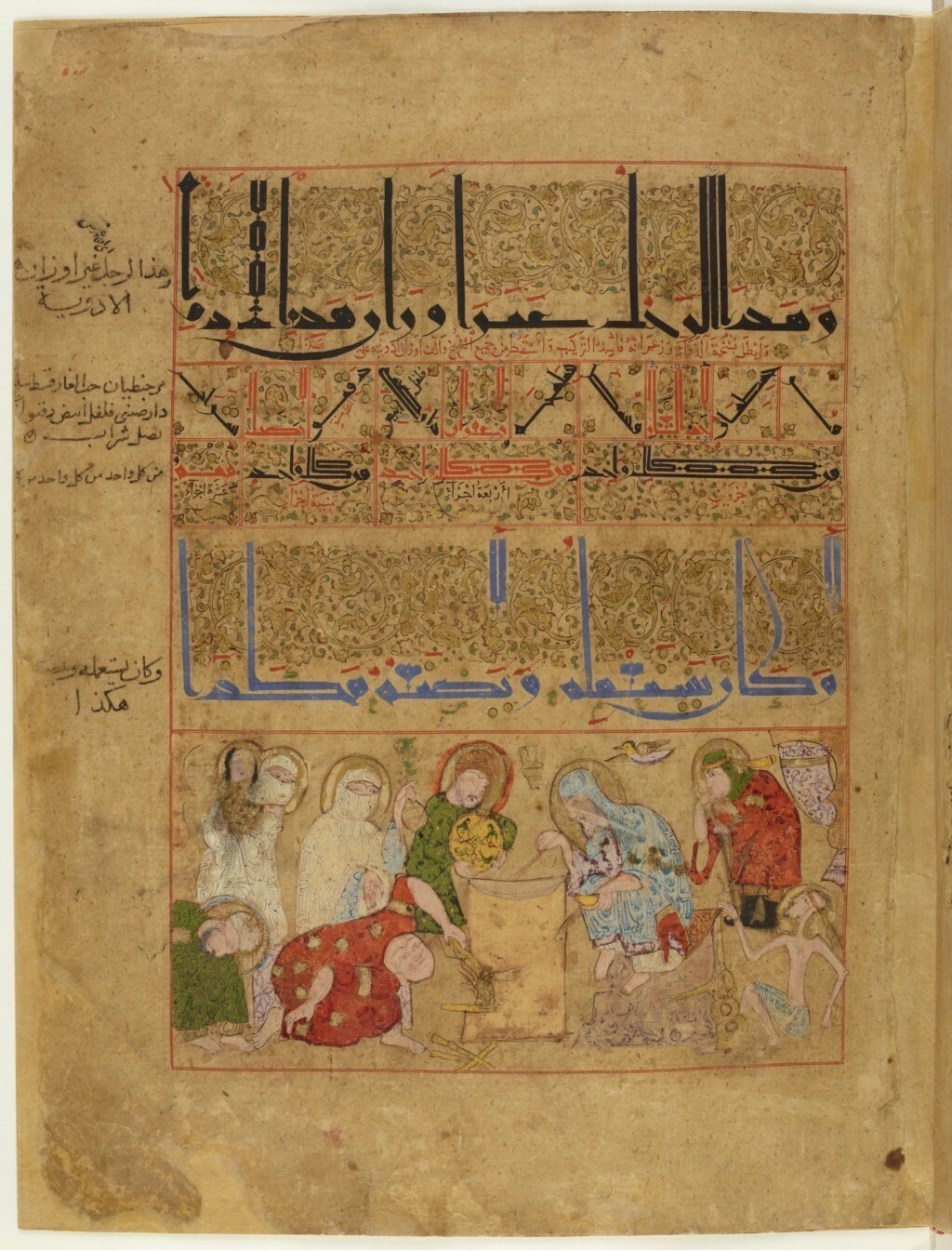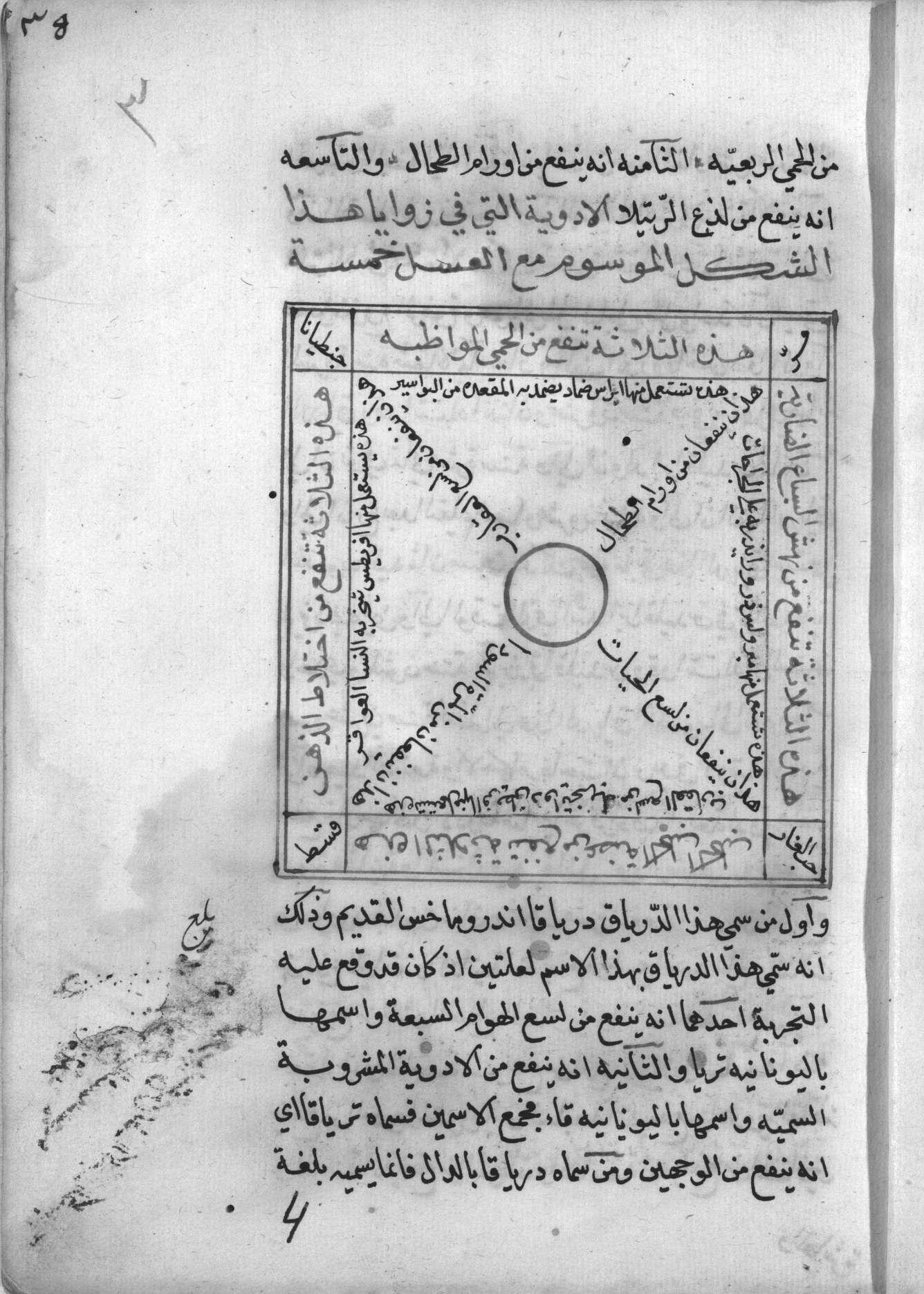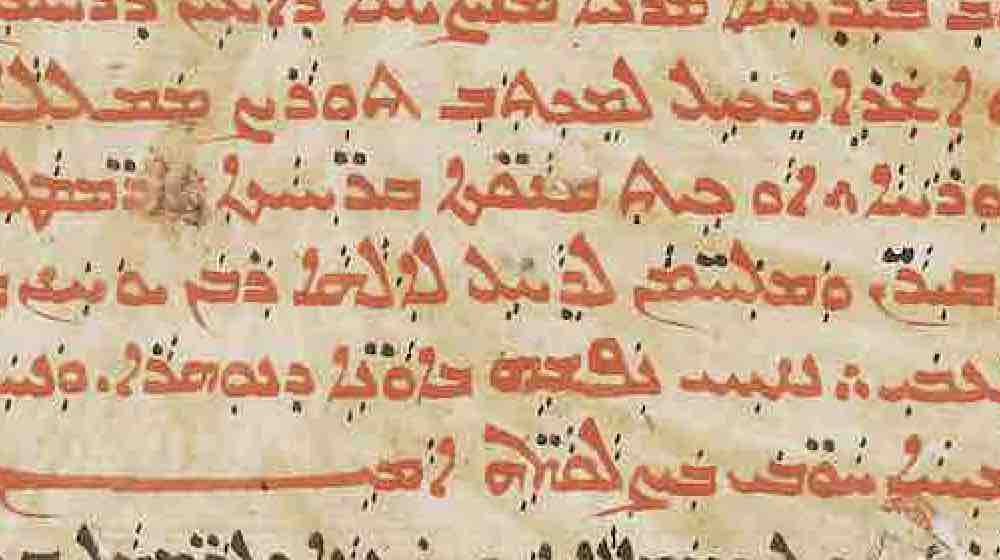Deadly Snakes And Remedies Against Their Venomous Bites In The Handy Charts Of A Copy Of The “kitāb Al Diryāq” (book On Antidotes)
Deadly snakes and remedies against their venomous bites in the handy charts of a copy of the “Kitāb al-diryāq” (Book on antidotes)
This story is part of an ongoing series of editorials in which HMML curators and catalogers examine how specific themes appear across HMML’s digital collections. Examining the theme of “Death & Mourning,” Dr. Celeste Gianni has this story from the Islamic and Eastern Christian manuscript collections.
The Arabic manuscript tradition is rich in medical works discussing remedies and treatments against snake bites and their deadly venom. The Greek word θηριακή (thēriakē: concerning venomous beasts) was adopted in its Arabic form al-diryāq or al-tiryāq as the word used to describe concoctions prepared to treat snake bites.

Theriacs were a mix of ingredients from any number of animals, vegetables, and minerals that were pulverized, combined, heated so that they would dissolve in liquid, then mixed with honey as a binder to acquire the consistency of a sweet paste.
The different recipes for the preparation of theriacs that were featured in the most famous Arabic medical treatises were often translated into Latin between the 11th and 14th centuries.
However, there is also a text that deals exclusively with the topic, the Kitāb al-diryāq (Book on antidotes). It is probably an original Arabic text (not a translation) that was substantially influenced by the Greek tradition on theriacs. The full title of the text—Tafsīr Yaḥyá al-Naḥwī ʿalá kitāb Jālīnūs fī al-diryāq (Commentary by Yaḥyá al-Naḥwī on Galen’s [Kitāb] al-diryāqwas)—identifies the commentary as by Yaḥyá al-Naḥwī (John Philoponus of Alexandria, the Grammarian) and incorrectly attributes the main text to Galen.

The Kitāb al-diryāq was considered by some to be a mystical-magical text, instead of a scientific one, because of its narrative structure and mixed contents. In fact, it traces the history of each theriac and its makers over a period of almost 1,500 years, with anecdotes and accounts of the nine physicians who made the theriacs featured in the text, namely Andromachus the Elder, Heraclides, Philagrius, Proclus, Pythagoras, Marinus, Magnus of Mesa, Andromachus the Younger, and Galen.
For example, this anecdote tells how Andromachus the Elder made his final formula for his theriac:
One day Andromachus arrived on an island, and as he was crossing its gardens heading to another island, he saw a boy that came out and urinated on a wall. While doing so, a snake came out and bit him. The boy ran immediately and killed the snake, and then went to pick up the seeds from a laurel tree, and ate them. Andromachus approached the boy and asked him from a distance: “What are you doing?” The boy said: “a snake just bit me while urinating, so I killed it.” Then Andromachus asked: “And why did you eat laurel seeds?” The boy: “Don’t you know that laurel seeds are an antidote to the poisons of all animals?” Andromachus: “No, I didn’t.” The boy said: “Yes, it is. One of the knowledgeable merchants came once and took laurel seeds, kneaded them with a similar amount of honey without foam, warmed it up, and gave four units of it to drink to anyone who was stung by any animal. In this way whoever is bitten is healed at the time of the sting before the poison spreads to a major organ. Since I am far now [from home], I used this [the leaves] on my way.”
The boy and Andromachus separated, and the boy headed towards the island while Andromachus left for another island. When the latter finally returned to his city, he tried this medicine and found it to work well on slimy little snakes and scorpions. Then, Andromachus wanted to formulate a medicine whose benefits would be stronger than the benefits of this medicine. So he added medical components, which were gentian, myrrh, and costus, and his four medicines were of the utmost quality and precision of craftsmanship in composition, and upon counting, they attained nine benefits: the first is that they benefit against snake bites; the second is that they benefit against scorpion bites; the third against dogs with rabies; the fourth against wild lions; the fifth against black bile; the sixth against fainting (or a disoriented mind); the seventh against fever; the eighth against spleen tumors; the ninth against tarantula bites. And this is the theriac of Andromachus the Elder.
(Text translated from manuscript USJ 00283, fol. 2v–3r)
Within these tales, the procedures and ingredients to make the theriacs are also described, from the simplest formula in Andromachus’ recipe to the most complex compound in Galen’s mix. These preparation elements helped influence the revaluation of this text as a scientific work, despite its literary and fictional features.
To date, there are only six known copies of the Kitāb al-diryāq. The most famous are two illustrated manuscripts—one held in Paris (Bibliothèque nationale de France, Arabe 2964) and one in Vienna (Österreichische Nationalbibliothek, A.F. 10)—renowned for a series of miniatures representing some of the anecdotes involving the nine physicians, as well as more scientific illustrations of plants and snakes that could aid the reader in preparing the theriacs.
A lesser-studied copy of the work is included in manuscript USJ 00283, held at the Bibliothèque Orientale of the Université Saint-Joseph in Beirut and digitized by HMML.

The manuscript is dated 5 Rabīʿ al-Thānī 1151 AH (July 23, 1738 CE), and was copied by ʿAbd Allāh al-Hāshimī. At the end of the text, al-Hāshimī also transcribed a translation note from the original manuscript that he copied, which was dated 14 Rajab 621 AH (1224 CE). The note states that the 1224 CE manuscript contained the book of Shānāq the Sage on the making of poisons and also the Galen-attributed text on theriacs. However, only the latter is included in USJ 00283.
Al-Hāshimī’s 18th-century copy is characterized by the presence of numerous charts, each describing the preparation of theriacs by the nine physicians, with details on the ingredients and their benefits. The reproduction of the illustrative charts for the theriac recipes, and not of the miniatures featuring the more narrative components of the text, suggests an increased interest in and focus on the scientific aspect of the text in the 18th-century readership.

Further Reading:
Kerner, Jaclynne J. “Art in the name of science: the Kitab al-diryaq in text and image”, in Anna Contadini (ed.), Arab painting. Text and image in illustrated Arabic manuscripts (Handbook of Oriental Studies 1/90), Leiden/Boston: Brill, 2010: 23–39.
Walker-Meikle, K. “Toxicology and treatment: Medical authorities and snake-bite in the Middle Ages” in Korot, vol. 22, 2013–2014, pp. 85–104.




